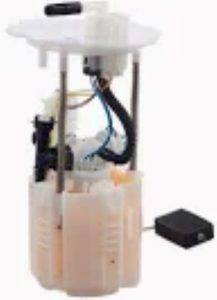Fuel pump performance curves offer valuable information on how fuel pumps behave under different operating conditions. These curves usually illustrate the relation between flow rate and pressure, which are two main parameters for pump application. For example, a 50-PSI fuel pump may yield 100 liters per hour, but at 70 PSI it can fall to a dismal 85 liters per hour. This knowledge is important for tuning performance in certain settings: for example, automotive engines may need accurate fuel delivery to get the best combination of efficiency and power.
Fuel pumps are an essential component of industries such as automotive manufacturing. Classic high-performance vehicles have depended on fuel pumps that could handle an increased demand for volume even with additional pressure. For example, most racing engines require at least 90 PSI, and performance curves facilitate calculations so that the engineers would know whether a pump can supply that pressure. Performance curves (published by companies such as Bosch and Walbro) are common guides for consumers or automotive engineers who are selecting a pump to match with their engines.
Efficiency is one of the primary aspects to help interpret those curves. Fuel pumps are most efficient when they are able to deliver the flow required with the least resistance, so that's how we target our efforts. The pump looses efficiency by operating it out of definition. For example, if the pump is rated to operate at a PSI of 30 – 60, forcing it into operation below this may not only increase energy use but cause the unit & HVAC system to work harder while shortening its life. Industry experts such as Robert Bosch said that the use of pump characteristics to select the pump could prevent overuse of the pump, that is, it would not work at 100,000 km but at 80.

Examples of this give important context to how performance curves should be analyzed. In 2020, a top automotive brand issued a recall for more than 100,000 vehicles with defective fuel pumps that did not comply with the curves in performance. At common pressures, these pumps sputtered in performance; at high pressure they were more likely to stall the engine entirely and as we know reliability is a bad thing. The accident highlighted the need to know fuel pump performance curves when choosing parts for automobile applications.
Performance curves also provide critical data about pump size and suitability to particular duties. It can be tempting to install 200-liter-per-hour-rated pump on an engine -- after all, how could it hurt?Because a far less flow might produce the correct pressure and still starve the engine of fuel, which would in time leave the poor thing lean if well short on power. Experts suggest testing the entire curve from low-pressure idle to the highest pressure available to ensure that fuel delivery is consistent across all areas of operation.
Finally, choosing the correct fuel pump can save your wallet. While this pump may be more expensive to purchase a pump with this performance curve will pay dividends in maintenance savings, engine life and overall efficiency. For instance, a $200 pump with an appropriate performance curve could offset up to $1,000 in repairs throughout the life of the vehicle. This link was demonstrated via multiple case studies in the automotive sector, showcasing an ROI of more than 2 years depending on fuel price and use hours; proving the worth in understanding and operating with performance curves during selection.
For more information on Fuel Pump Group, please visit the site: Fuel Injection Pump